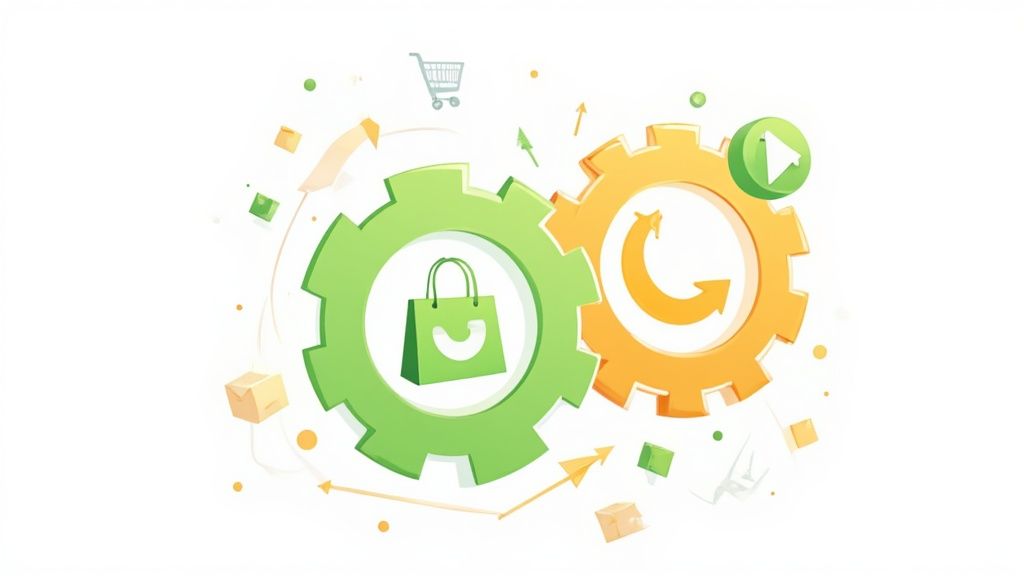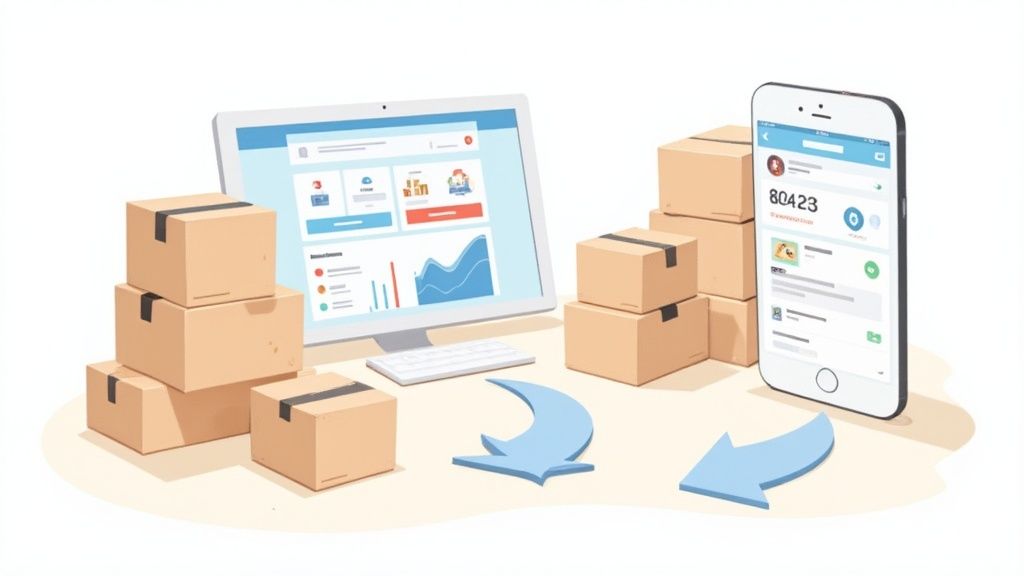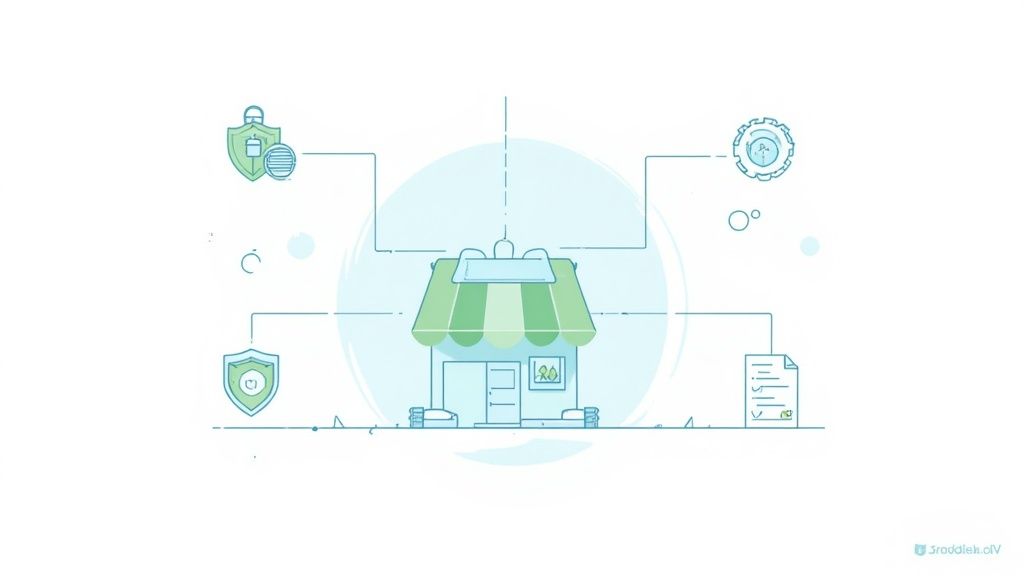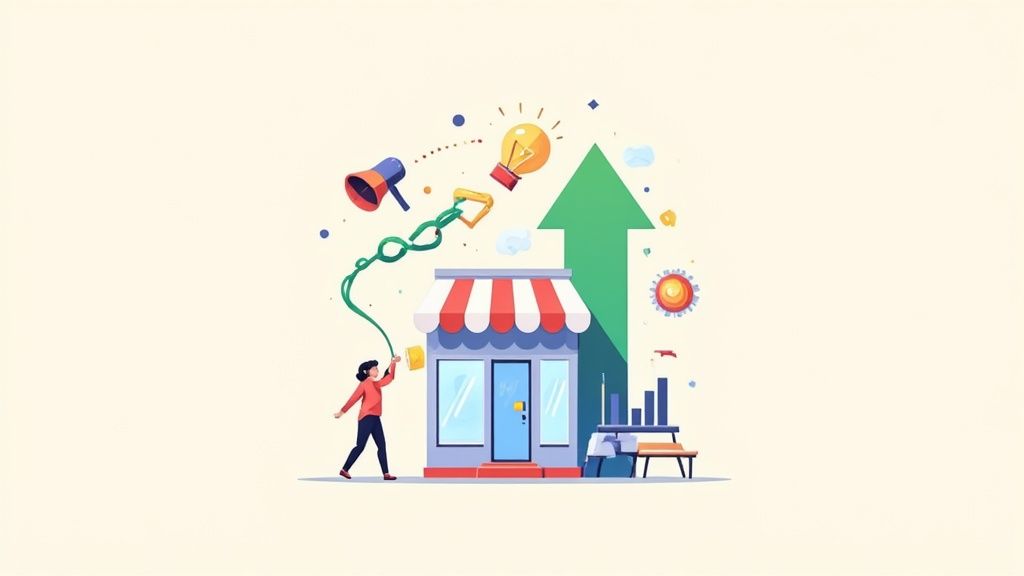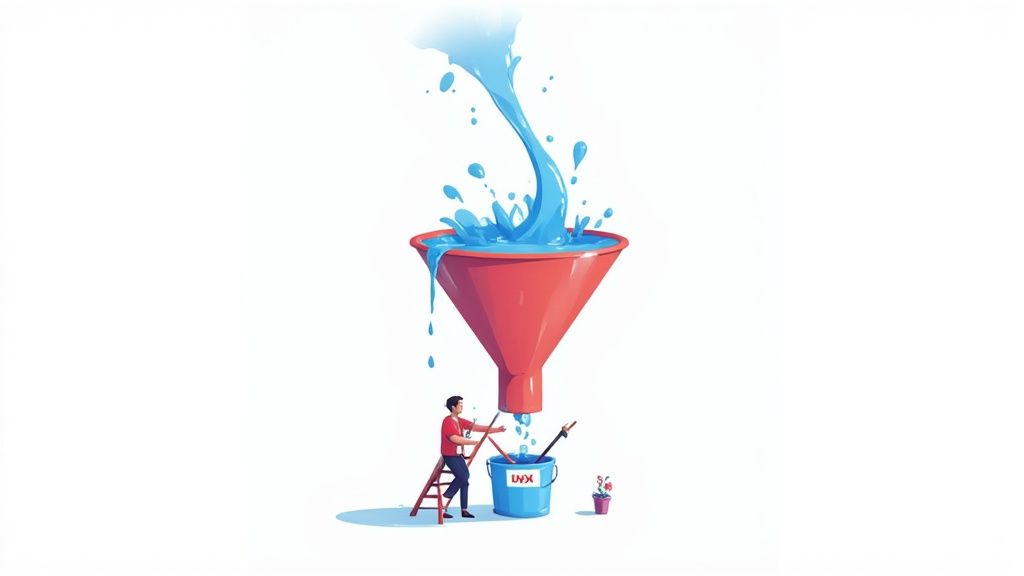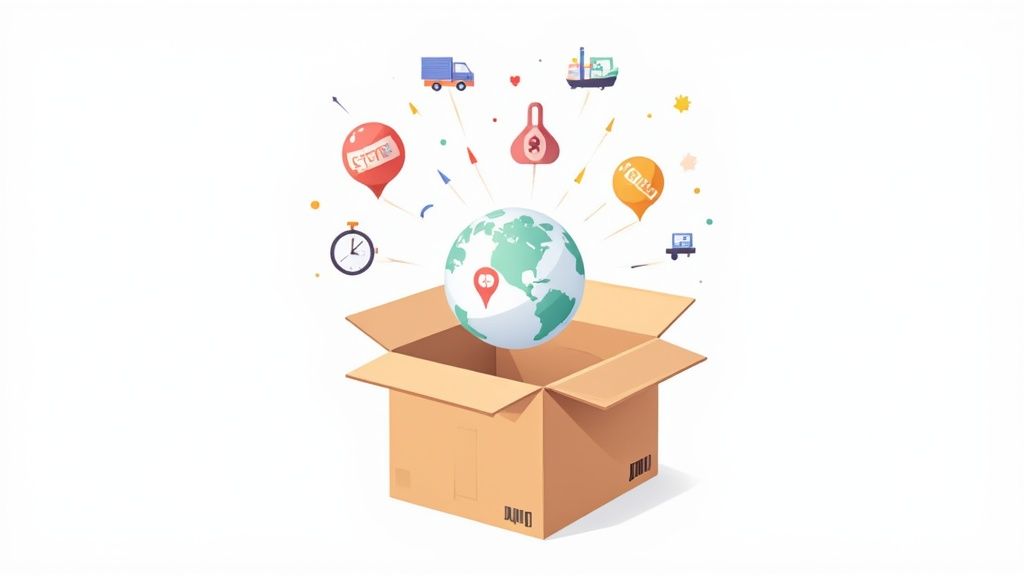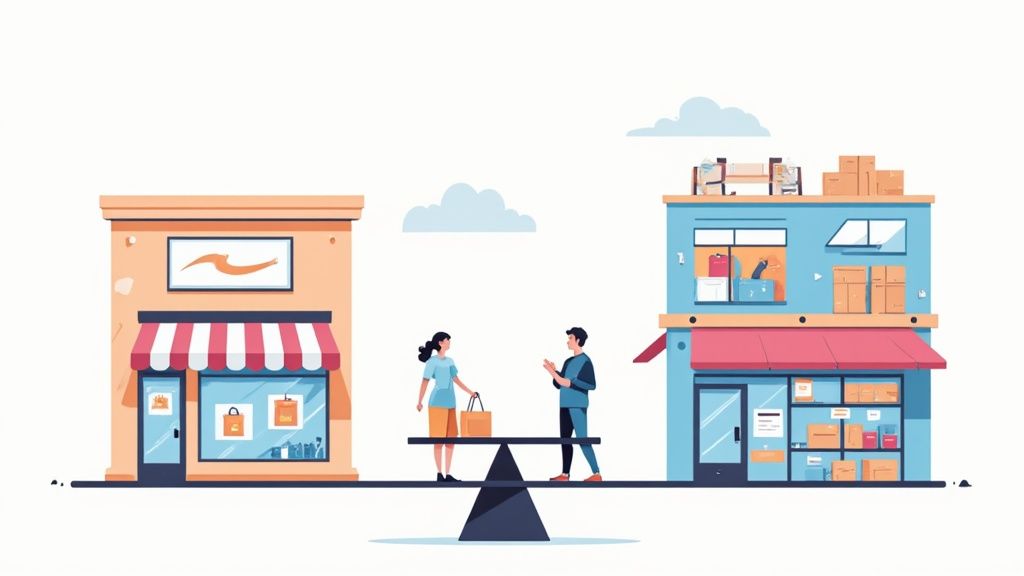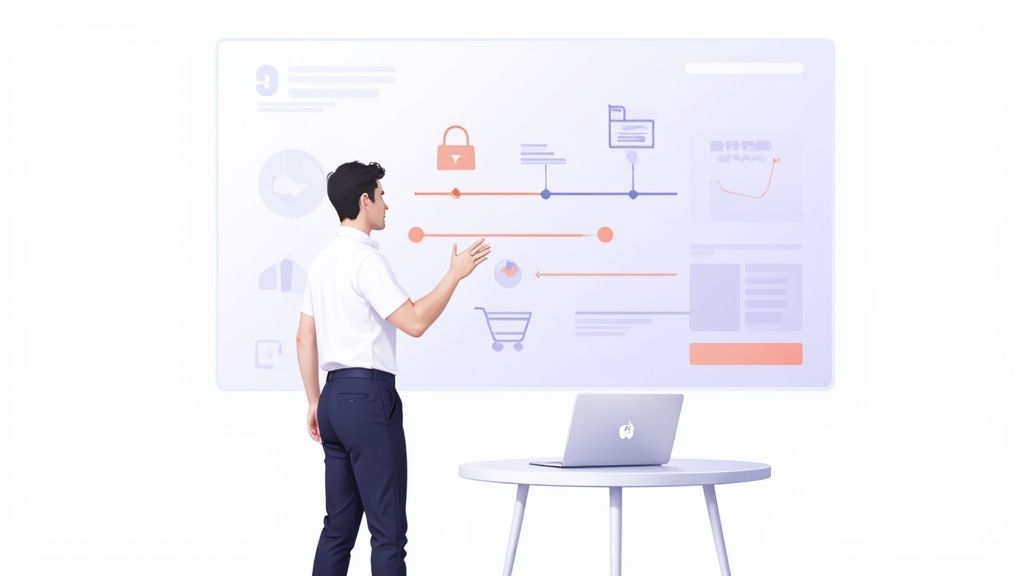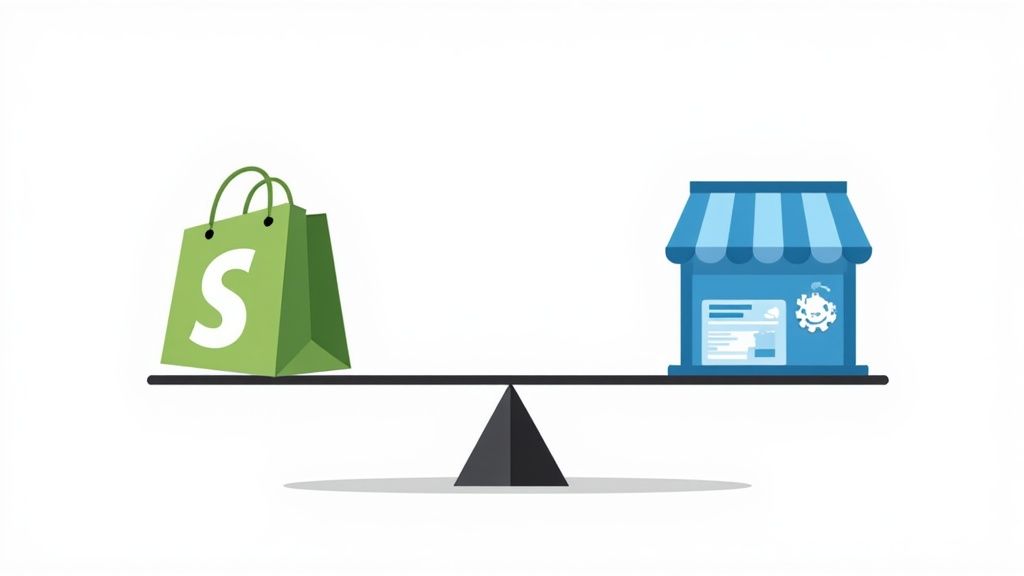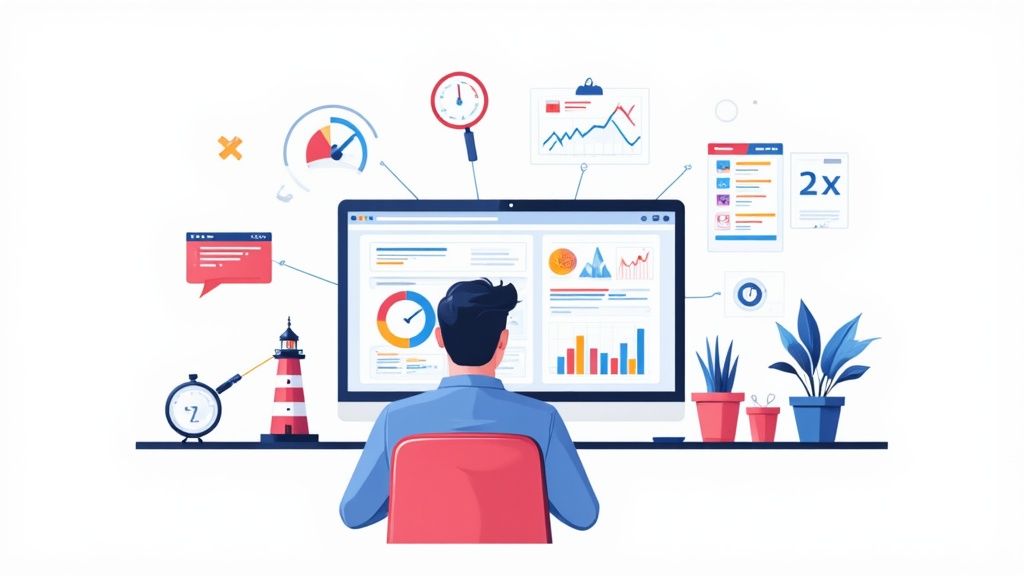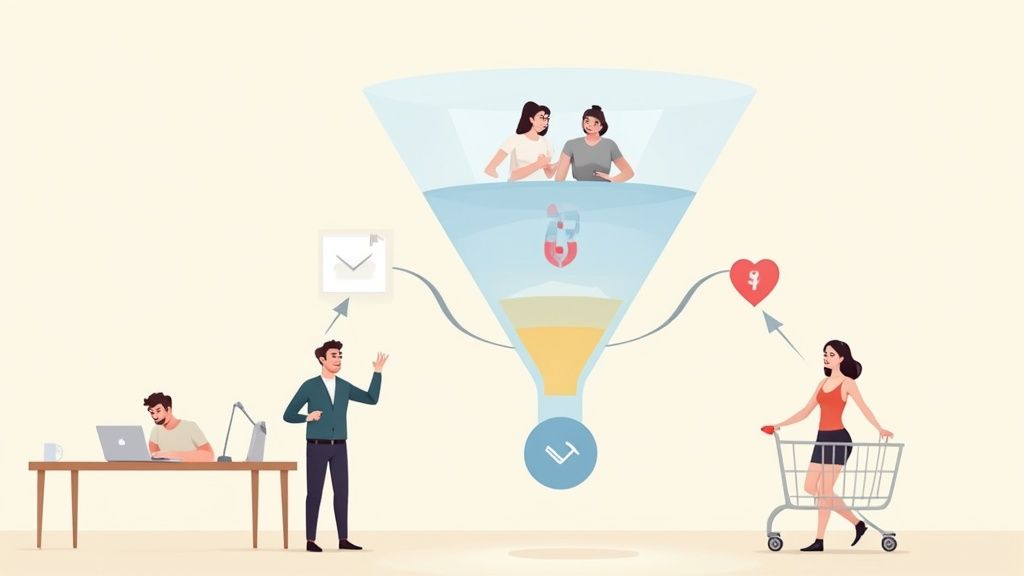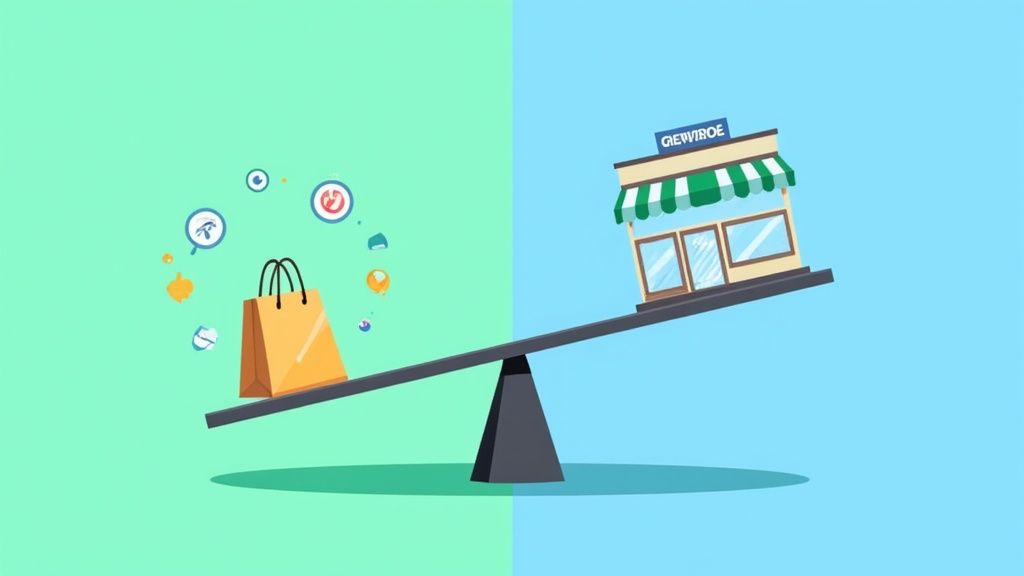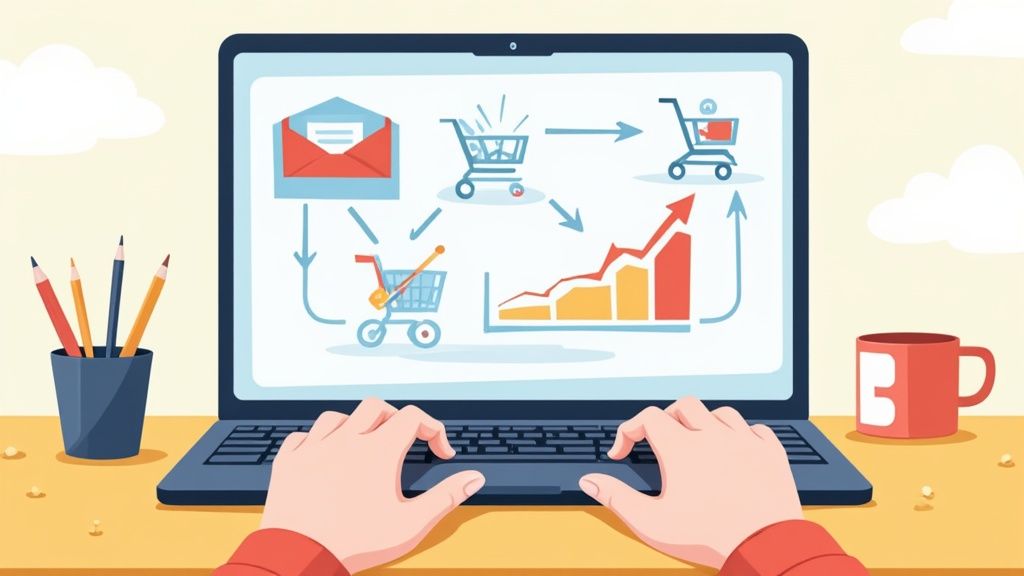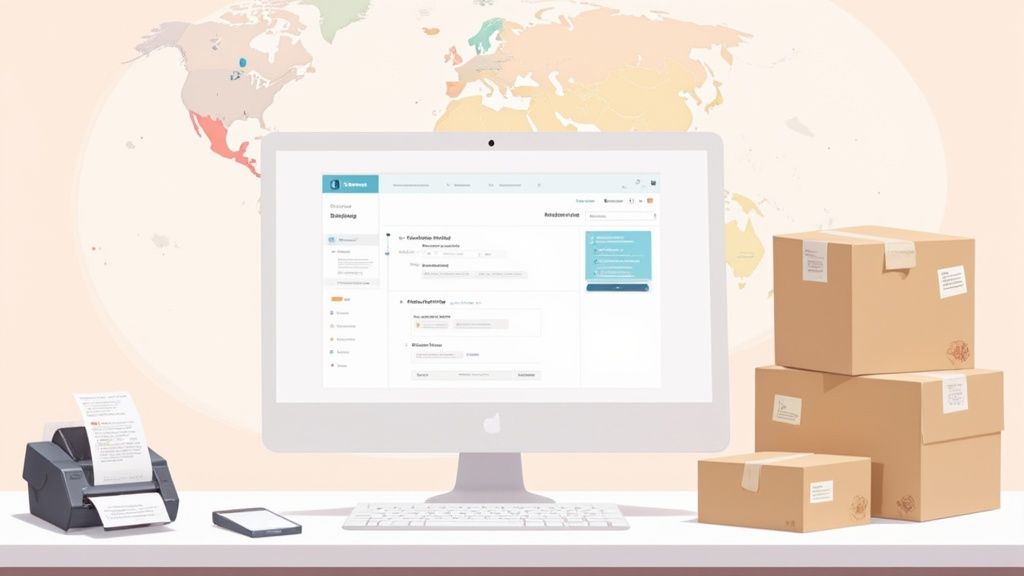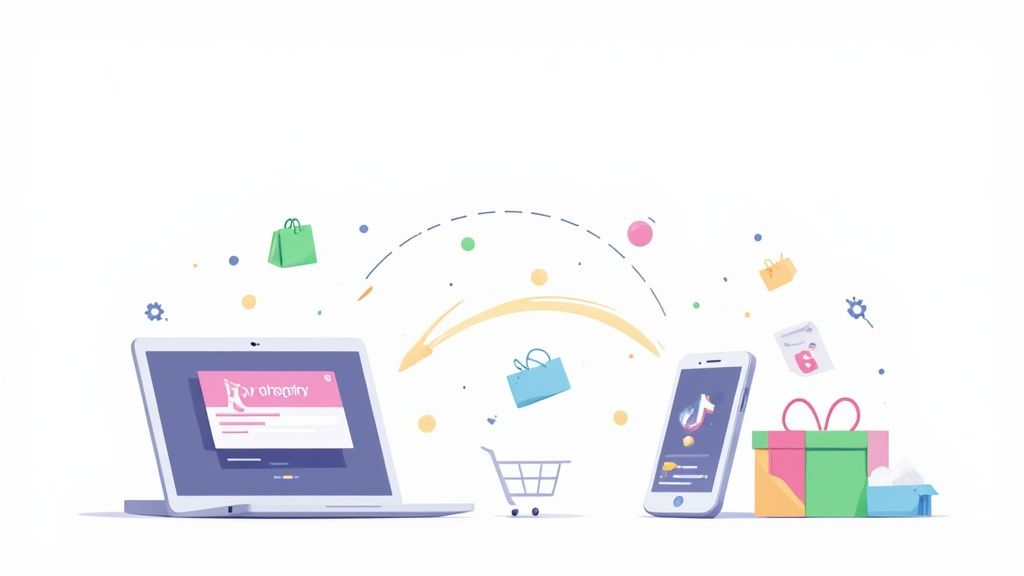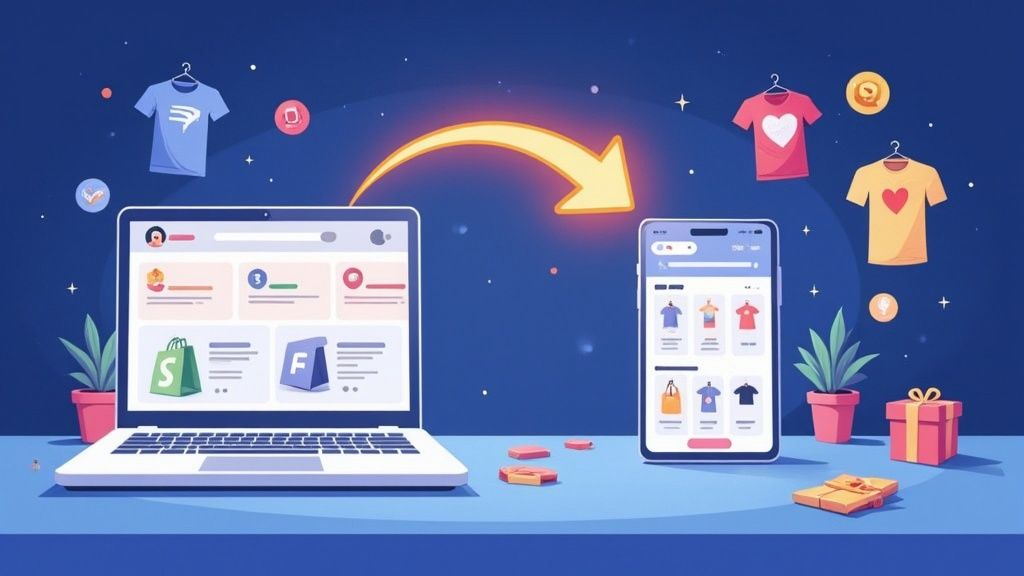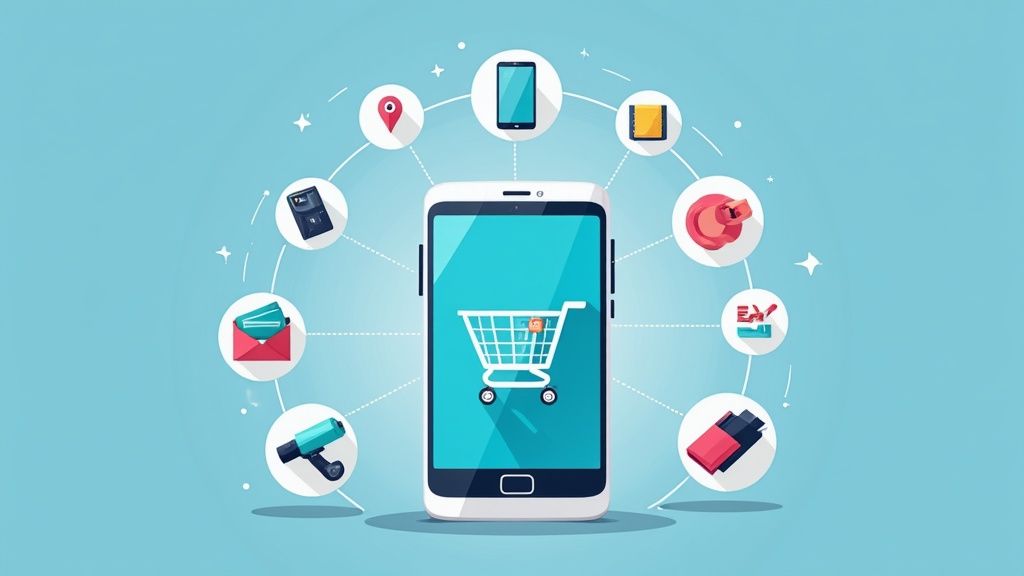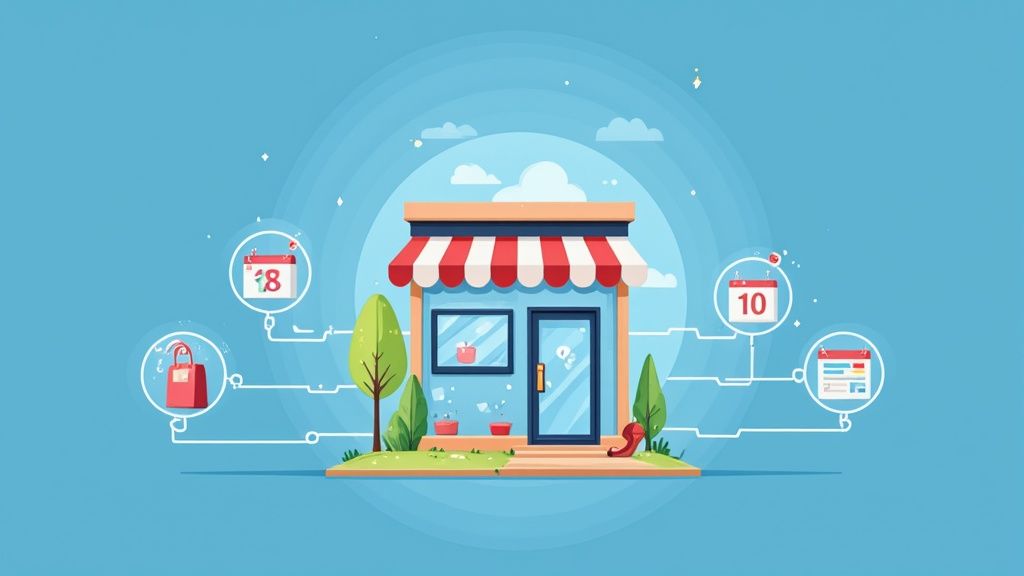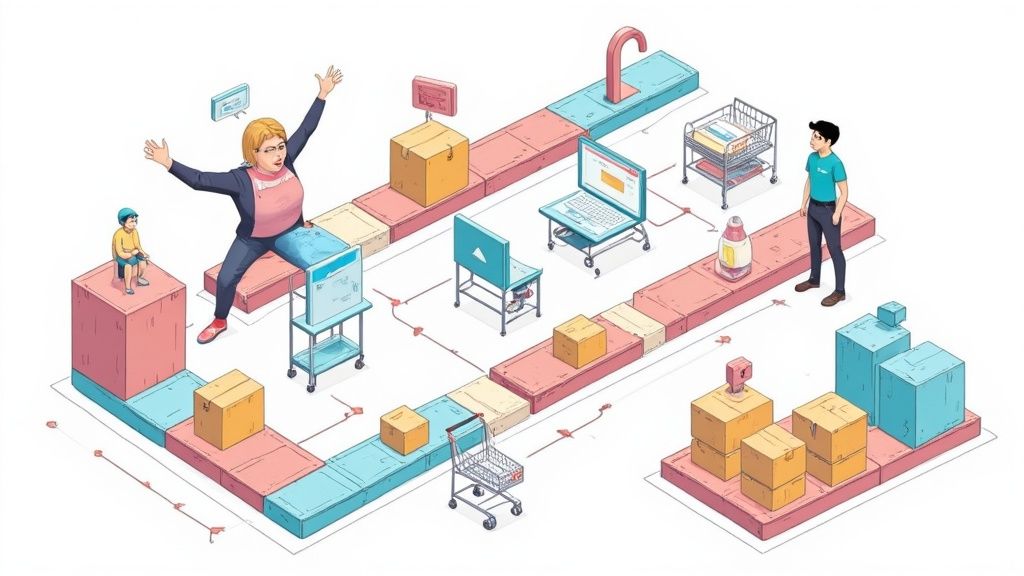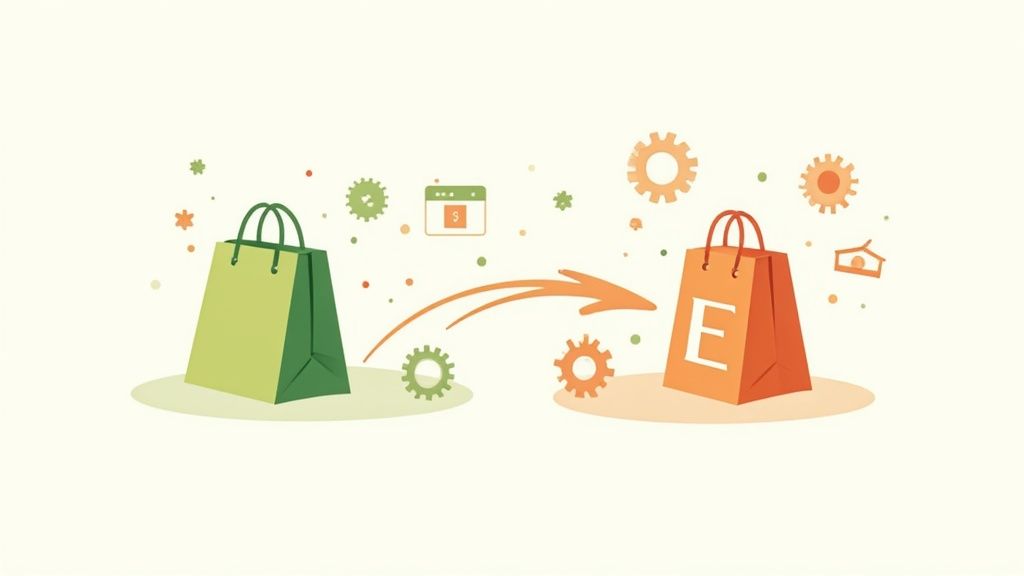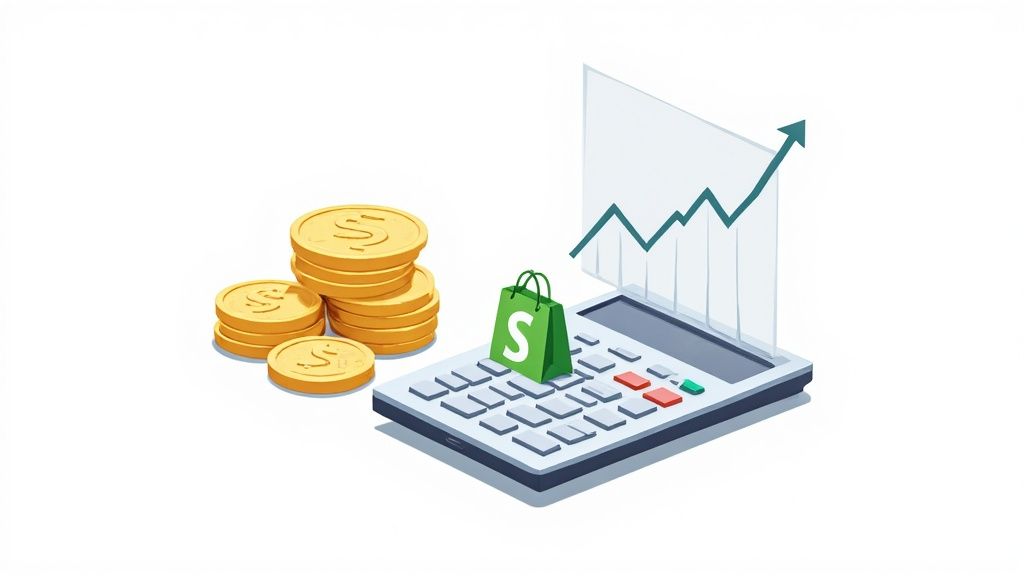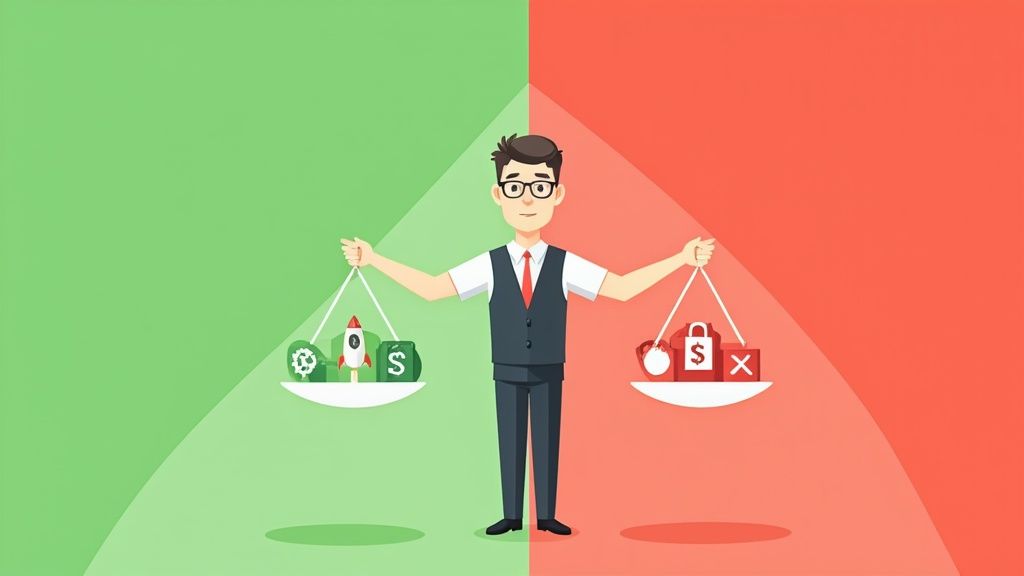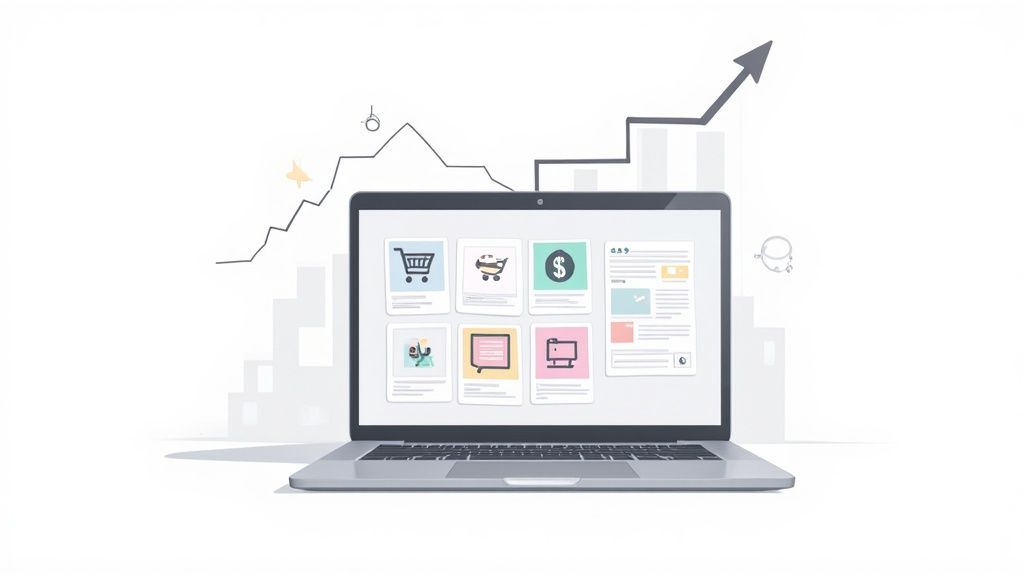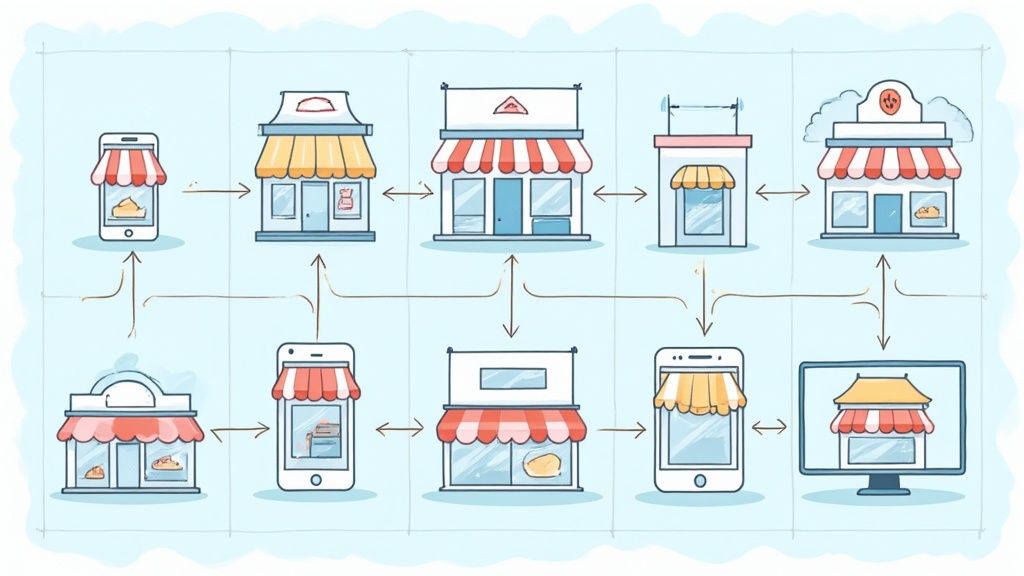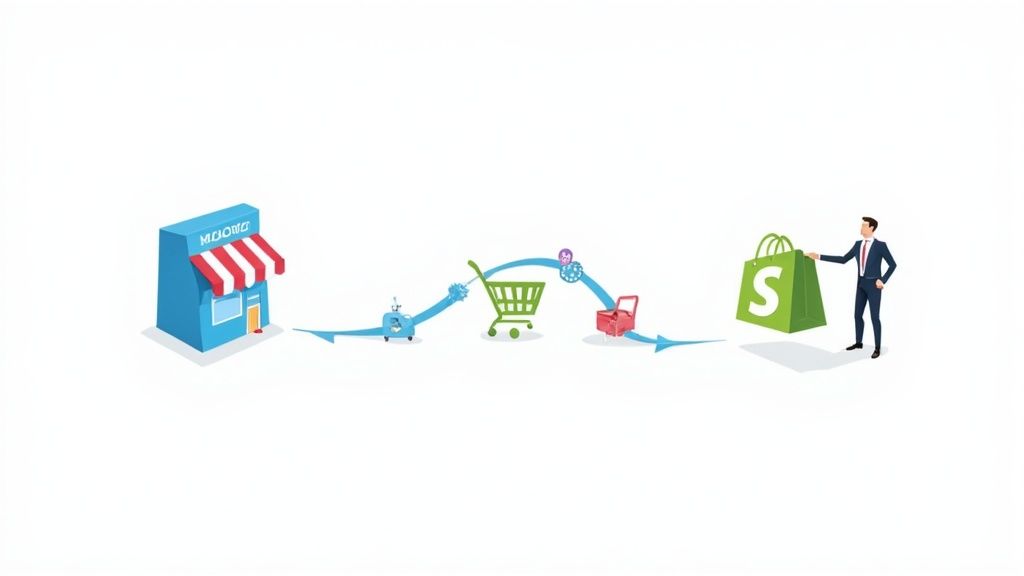
Why Subscription Ecommerce Is Your Business Future
Imagine your customers eagerly waiting for their next delivery, a package they've already paid for, while you can forecast your revenue months ahead. This isn't just a hopeful idea; it's the reality for businesses using the subscription ecommerce model. This approach moves past the uncertainty of one-time sales to forge reliable, long-term connections with your customers. It's a fundamental change in how companies view growth and customer value.
However, building a successful subscription service takes more than just setting up automatic payments. The brands that truly succeed understand the customer psychology behind the commitment. It's about crafting an experience so valuable it becomes a natural part of a customer's life. To see the full picture, it's key to understand what subscription ecommerce is at its core—a model built on delivering consistent value, not just a single product.
The Power of Predictable Revenue
The single greatest benefit of the subscription model is the shift from unpredictable sales to predictable recurring revenue. This stability is a game-changer. Instead of starting from scratch every month, you begin with a baseline of guaranteed income. This consistency allows for much smarter financial planning, including:
- Smarter Inventory Management: You can predict demand with far greater accuracy, cutting down on the costs of holding too much stock or losing sales because an item is unavailable.
- Confident Budgeting: With a clear view of your cash flow, you can confidently invest in marketing campaigns, develop new products, and grow your team.
- Increased Business Valuation: Investors often value businesses with steady, recurring revenue streams much higher than those with inconsistent, transaction-based income.
This financial security is a major reason why many traditional retailers are now adding subscription options. They see that a loyal subscriber base is a strong defense against market swings and fierce competition.
Building Deeper Customer Relationships
Beyond the financial benefits, the subscription ecommerce model reshapes your relationship with your customers. You evolve from a simple seller into a trusted part of their routine. A coffee roaster delivering a hand-picked blend each month isn't just selling beans; they're curating a daily ritual. A pet supply brand that automates food delivery isn't just shipping a bag; it's giving busy pet owners peace of mind.
These ongoing interactions create countless chances to gather feedback, learn what your customers like, and make their experience even better. This cycle of listening and improving builds incredible loyalty, turning customers into genuine fans who promote your brand.
The market data confirms this powerful shift. The subscription e-commerce market was valued at $326.44 billion in 2024 and is expected to grow to an incredible $539.16 billion by 2025. That represents a compound annual growth rate of 65.2%. This isn't a passing fad; it's a core part of modern commerce. You can learn more about these extraordinary growth projections in the full market report.
Five Proven Subscription Models That Actually Generate Revenue
Choosing the right structure is a critical decision in subscription ecommerce. The model you select shapes your inventory, marketing, and the very nature of your relationship with customers. While countless variations exist, most successful approaches use one of five core models refined by leading brands. Understanding these will help you align your product with what your customers truly want.
This infographic breaks down the main categories of subscription ecommerce, showing how they branch from the central concept.

As the diagram shows, while diverse, most successful models focus on either automated replenishment, curated discovery, or privileged access.
1. The Replenishment Model
This is the most straightforward subscription model, often called "subscribe and save." It’s built on convenience, automating the purchase of consumable products that customers use regularly. Think of it as putting a household staple on autopilot.
- Core Value: Convenience and savings. Customers never run out of essentials like coffee, vitamins, pet food, or razors.
- Best For: Products with a predictable usage cycle. If a customer knows they will need a new one every 30 or 60 days, replenishment is a perfect fit.
- Example: Dollar Shave Club mastered this by simplifying the purchase of razors, a product men bought regularly anyway. They didn't invent a new need; they just made fulfilling it easier and more affordable.
This model thrives on utility. Its main challenge is maintaining competitive pricing and ensuring the delivery schedule perfectly matches customer consumption to avoid over- or under-stocking.
2. The Curation Model
Unlike replenishment, the curation model is built on discovery and delight. Here, customers subscribe to receive a collection of items, often new or exclusive, that are hand-picked for them by experts. Think of it as a personalized gift that arrives at your door every month. The value isn't just in the products themselves, but in the experience of unboxing and discovering something new.
- Core Value: Discovery, personalization, and surprise. It caters to hobbyists and enthusiasts who love trying new things within a specific niche.
- Best For: Verticals like beauty (Birchbox), food (HelloFresh), or apparel (Stitch Fix), where variety and personal taste are paramount.
- Key to Success: Deeply understanding customer preferences through quizzes and feedback is essential. A great curation box feels like it was made just for you, which builds a strong emotional connection and reduces churn.
3. The Access Model
The access model doesn't always involve shipping a physical product. Instead, customers pay a recurring fee for exclusive access to content, perks, or services. This is the dominant model for digital goods like streaming services but is also powerful in ecommerce.
- Core Value: Exclusivity and privilege. It makes customers feel like members of a special club.
- Best For: Brands with strong communities or those that can offer unique benefits. This could include members-only pricing, early access to new product drops, or entry to a private community forum.
- Example: A premium apparel brand might offer a subscription that gives members 20% off all purchases and free shipping, creating a strong incentive for loyal customers to join.
Success here depends on making the membership perks so valuable that the recurring fee feels like a bargain. You can explore a variety of subscription business model examples to see how different brands apply these core concepts.
The Hidden Forces Reshaping How People Buy
 The boom in the subscription market is more than just a passing trend—it signals a deep change in how we think about buying things. Beneath the impressive growth numbers is a fundamental shift in consumer psychology. People today are actively looking for ways to make their lives simpler, and subscription ecommerce meets this need by tapping into our core desires for convenience, discovery, and community.
The boom in the subscription market is more than just a passing trend—it signals a deep change in how we think about buying things. Beneath the impressive growth numbers is a fundamental shift in consumer psychology. People today are actively looking for ways to make their lives simpler, and subscription ecommerce meets this need by tapping into our core desires for convenience, discovery, and community.
This change is fueled by a common modern problem: decision fatigue. Every day, we are bombarded with choices, from what to eat for lunch to which shampoo to buy. A subscription takes away a small but recurring set of these choices, freeing up our mental bandwidth. Think of it as putting a small part of your life on autopilot. Instead of re-evaluating the same purchase every week or month, a subscription automates it, bringing a sense of relief and efficiency.
Tapping Into Core Human Desires
Beyond just making life easier, the most effective subscription services create an emotional connection with their customers. They understand that a regular delivery can be much more than a simple purchase; it can be an event.
- The Psychology of Anticipation: Successful curation boxes, for instance, are masters of creating anticipated pleasure. Knowing that a box of new coffee blends or unique skincare is on its way generates excitement long before it arrives. This feeling of looking forward to a surprise is a powerful way to build customer loyalty, turning a routine transaction into a moment of joy.
- A Sense of Belonging: Access-based subscriptions make customers feel like they're part of an exclusive group. By offering members-only content, special perks, or a community forum, these businesses cultivate a feeling of identity and connection. Customers aren't just buying something; they're joining a club of people who share their interests, which strengthens their decision to stay subscribed.
- The Need for Personalization: Modern consumers expect experiences that feel like they were made just for them. Subscription businesses are great at this, using data from quizzes, past purchases, and customer feedback to customize their offerings. This creates a highly personal service that feels special, making it much harder for a customer to leave for a one-size-fits-all alternative.
Generational and Cultural Differences in Buying Habits
How people adopt subscription ecommerce also changes significantly across different groups. Younger generations, like Millennials and Gen Z, grew up with services like Netflix and Spotify. For them, paying a recurring fee for access and convenience is second nature. They are often more receptive to curation and discovery models that match their personal style and values.
On the other hand, older generations might be more interested in the practical side of replenishment models, appreciating the "set it and forget it" convenience for everyday essentials. Cultural norms also play a huge part. In some cultures, a long-term commitment requires a higher level of trust, while in others, community-focused access models do very well. Understanding these differences is vital for any brand hoping to grow its subscription business. The market's incredible growth reflects this broad appeal, with a 2024 valuation of around USD 278 billion expected to climb to USD 6.37 trillion by 2033. You can explore the full analysis behind these subscription market forecasts to truly appreciate the scale of this opportunity.
Building Your Subscription Strategy From Ground Zero
Turning a great idea into a profitable subscription business is like building a house. A rush of enthusiasm might make you want to start putting up walls immediately, but without a solid foundation, the entire structure will eventually collapse. In subscription ecommerce, that foundation is your strategy. It’s a thoughtful, step-by-step process that moves from initial excitement to a sturdy, lasting business model.
A key first step is to master target audience analysis to ensure your offerings connect with what people actually want. You must go beyond simple demographics to understand the real problems and desires of potential subscribers. Are you solving a recurring annoyance? Are you delivering a moment of monthly delight? Answering these questions honestly is the key to finding a market gap your competitors have overlooked.
Validating Your Subscription Idea
Before pouring significant time or money into your venture, you must confirm that people will actually pay for your idea on a recurring basis. This is different from confirming they like your product; it's about confirming they will commit to it.
- Problem-Solution Fit: Clearly define the problem you are solving. For a replenishment service, the problem might be the hassle of running out of essentials like coffee or razors. For a curation box, it could be the desire for new and exciting experiences, like trying artisanal snacks from around the world.
- Willingness to Pay: Don't just ask people if they would subscribe. A better test is to set up a simple landing page that outlines your offer and asks for an email signup to be notified on launch day. This small action is a much stronger signal of genuine interest than a simple "yes."
- Minimum Viable Offer (MVO): What is the simplest version of your subscription you can test? Before sourcing dozens of products, could you test the concept with a single, highly desired item or a curated bundle of just three things?
This early validation phase turns your assumptions into data. It guides your strategy toward what the market actually wants, not just what you think it wants.
Understanding Your Unit Economics
Many subscription ventures fail because they don't get a handle on their numbers. In subscription ecommerce, two critical metrics determine if you'll be profitable: Customer Acquisition Cost (CAC) and Lifetime Value (LTV).
Calculating these isn't just an accounting chore; it's a strategic necessity. A high churn rate will crush your LTV and make your business model unworkable, no matter how great your product is. Successful businesses constantly watch these figures to make smart decisions on marketing spend, pricing, and efforts to keep customers happy.
Platforms built for recurring revenue often provide dashboards to help track these vital signs. This screenshot from a Shopify subscription commerce solution shows how key metrics like total subscribers, average order value, and churn rate are displayed clearly.
Seeing your data this way makes it easy to spot trends instantly. A sudden spike in the churn rate, for example, is an urgent signal to figure out what's causing customers to leave.
Defining Your Core Subscription Offer
With a validated idea and a firm grip on your economics, the final step is to hammer out the specifics of your offer. This means making key decisions that will shape the customer experience.
- Subscription Frequency: How often should you deliver? A weekly delivery might be perfect for fresh meal kits but would be too much for skincare products. Match the delivery schedule with how quickly customers naturally use up your products.
- Product Selection: Will you offer a fixed box where everyone gets the same thing? Or will you allow customers to customize their orders? Maybe a hybrid model works best. More flexibility can attract more customers but also adds operational headaches.
- Value Proposition: What is the core promise you're making? Is it convenience (never run out), discovery (try new things), savings (get a better price), or exclusivity (access to special items)? Your marketing and customer service should consistently reinforce this promise.
Building your strategy from the ground up is a careful process, but it's the only way to create a subscription ecommerce business that's built to last. It ensures you launch with a clear plan, a deep understanding of your customer, and a solid financial model.
Technology Trends Driving Subscription Success
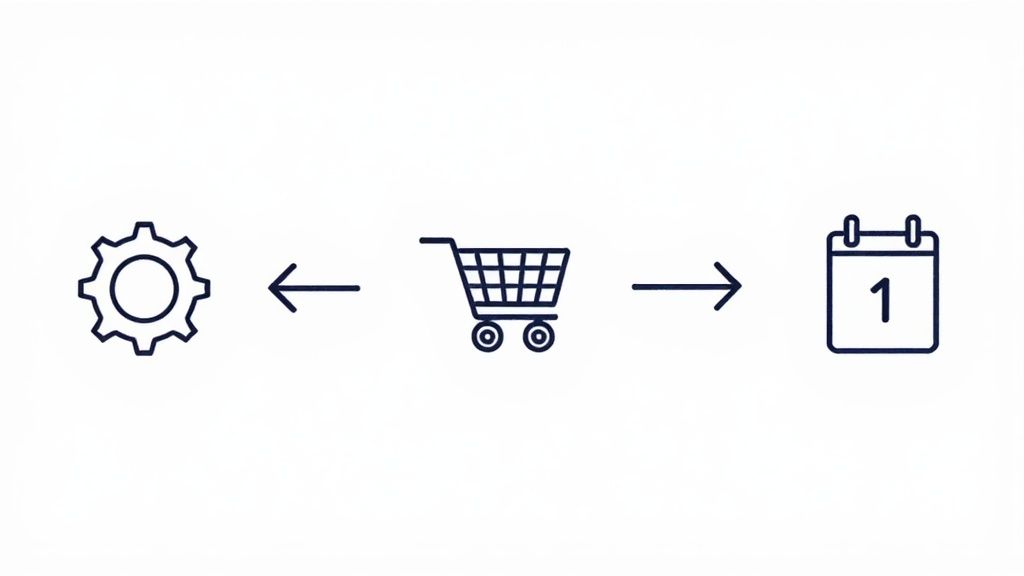
Successful subscription ecommerce businesses today don't just use technology; they build their entire strategy around it. Think of the right tech stack as the central nervous system for your recurring revenue business. It constantly processes signals from customer behavior to automate and improve the experience, going far beyond just having a pretty website.
The global subscription market is changing how people shop, with North America leading the way. The market was valued at USD 18.82 billion in 2024 and is expected to reach USD 46.05 billion by 2034. This impressive growth is fueled by smart technology that makes subscriptions more personal and efficient. You can explore a deeper analysis of these global subscription market trends to see the full picture.
The Rise of AI and Predictive Analytics
Artificial Intelligence (AI) and machine learning have become a kind of crystal ball for subscription brands. By analyzing huge amounts of customer data, these systems make surprisingly accurate predictions that directly improve profit and customer happiness.
Here’s how they make a difference:
- Predictive Churn Prevention: Instead of waiting for a customer to cancel, AI models spot at-risk subscribers by detecting small changes in behavior, like lower engagement or skipped deliveries. This allows businesses to proactively offer personalized deals to convince them to stay, with some brands boosting retention by 30-40%.
- Intelligent Inventory Management: For subscription boxes and replenishment services, running out of stock can be a disaster. AI forecasts demand with high accuracy, making sure you have the right products available without tying up cash in excess inventory.
- Hyper-Personalization: AI-powered recommendation engines suggest products a customer is likely to love, which helps increase the average order value. For a beauty brand, this could be an Augmented Reality (AR) feature to "try on" makeup. For a food subscription, it might mean matching meals to a customer's specific dietary needs.
Core Technologies for Seamless Operations
Beyond predictive tools, some foundational technologies are essential for growing smoothly. A solid payment processing system is one of the most critical parts. Without one, failed payments become a major cause of involuntary churn, where customers leave due to a technical glitch, not because they are unhappy. Modern subscription platforms depend on powerful payment solutions, and smooth Stripe payment integrations are a perfect example of technology that reliably handles recurring revenue.
Looking ahead, forward-thinking brands are already experimenting with the next wave of tools. IoT-enabled devices are creating automatic reordering systems—imagine a smart coffee machine that orders new beans when it senses it's running low. Others are testing blockchain-based loyalty programs to provide secure, transferable rewards. The main point is that technology in subscription ecommerce isn't just about making things run better; it's about building a smarter, more responsive, and more valuable relationship with every customer.
Platform Selection That Makes Or Breaks Your Business
Choosing your subscription ecommerce platform is a lot like picking the foundation for a new house. A solid foundation supports everything you build, while a weak one creates constant problems. Many merchants get distracted by flashy features, only to find critical limitations after they've already launched.
A good platform does more than just process recurring payments; it serves as the operational heart of your subscription business. Seemingly small details can have a huge effect on your success. For instance, dunning management—the automated process for handling failed payments—can be the difference between losing a subscriber and keeping them. A clumsy system leads to accidental cancellations, but a smart one can recover a surprising amount of revenue.
Core Platform Capabilities To Scrutinize
When comparing platforms, look past the marketing hype and focus on features that directly improve customer retention and make your life easier. The goal isn't just to get subscribers, but to create an experience that makes them want to stick around.
A flexible and easy-to-use customer portal is essential. This is your subscriber's personal dashboard where they manage their account. If customers can pause a subscription, skip a delivery, or swap a product on their own, they are far more likely to stay. A frustrating portal experience is a fast track to customer churn.
Here are the key functions to look for:
- Flexible Billing Logic: Can the platform manage different billing schedules (monthly, quarterly), prorated fees, and one-time purchases added to a recurring order?
- Dunning & Involuntary Churn Tools: Does it have automated email reminders and card-updater services to smoothly handle payment issues?
- Self-Service Customer Portal: How much control do customers have? Can they easily change products, adjust delivery dates, or update their payment method without help?
- Analytics and Reporting: Does the platform give you clear data on key metrics like Monthly Recurring Revenue (MRR), churn rate, and Customer Lifetime Value (LTV)?
Comparing Your Platform Options
The market has a variety of solutions, from dedicated apps that plug into platforms like Shopify to complete, all-in-one systems. There is no single "best" choice. The right fit depends on your business model, budget, and plans for growth.
To help you understand the landscape, here's a breakdown of the main platform types and what they offer.
Many growing brands on Shopify use apps like Recharge or Bold Subscriptions because they provide a strong balance of power and convenience. However, it's vital to research how any app will connect with your other essential tools, like your payment gateway, shipping software, and analytics programs.
For example, a gap in analytics could leave you blind to important trends in subscriber behavior. A smart platform selection is a strategic move that pays for itself through higher customer retention and smoother operations as your business grows.
Scaling Beyond Your First Thousand Subscribers
Hitting your first thousand subscribers is a huge milestone. But the very strategies that got you there can start to feel shaky as your business grows. What works for a small, dedicated community often becomes inefficient when you're trying to delight ten thousand customers. Scaling a subscription ecommerce business isn’t just about doing more of the same—it's about upgrading your systems, rethinking your strategies, and adopting a new mindset to handle more complexity without losing the magic that attracted customers in the first place.
As you grow, you'll run into some predictable growing pains. For example, managing inventory for a thousand subscribers might be doable with a very organized spreadsheet. But at ten thousand subscribers, that spreadsheet becomes a liability. This is the point where you need to shift from simply ordering more stock to actively forecasting demand. Leading brands use past sales data, seasonal trends, and even holidays to predict what they’ll need months from now. This foresight prevents frustrating stockouts and keeps your cash from being tied up in products that aren't moving. It’s the operational engine that keeps your subscription promises on track.
Advanced Strategies for Retention and Growth
When your subscriber base gets bigger, the number of customers who cancel each month also grows, even if your churn rate stays the same. A simple "we miss you" email won't be enough to combat this. To keep growing, you need to put smarter churn prevention systems in place.
- Behavioral Trigger Systems: Think of these as an early-warning system for your business. They automatically monitor customer actions for signs they might be thinking of leaving. For instance, if a subscriber skips several deliveries in a row or hasn't logged into their account in 90 days, the system can send a personalized offer, like a discount on their next order or a free gift. Brands using these tactics can often win back 20-30% of at-risk subscribers.
- Partnership Strategies: Relying only on paid ads can get expensive fast. Successful businesses often find new customers through smart partnerships. A subscription coffee company could team up with a business that sells artisanal mugs, offering an exclusive deal to each other's customers. This gives both brands access to a new, highly relevant audience for a fraction of the cost of traditional advertising.
These proactive steps are essential for maintaining healthy, long-term growth. For more ideas on keeping your customers happy, our guide on ecommerce customer retention provides practical strategies you can use right away.
Expanding Your Operations: Team and Global Reach
Scaling isn't just about customers; it's also about your team and where you do business. A three-person founding team can't support a company with fifty employees. Growing subscription businesses build specialized teams focused on the recurring revenue model. They create dedicated roles for retention marketing, customer success, and operations management, ensuring every part of the business is fine-tuned for the subscription lifecycle.
Taking your business international introduces a new layer of complexity, especially for subscription ecommerce.
Making it through these growth stages means moving from a startup hustle to a structured, data-driven operation. By planning for these challenges and putting the right solutions in place, you can avoid the plateaus that trip up many promising subscription businesses and ensure your growth is both fast and sustainable.
At ECORN, we build the strong Shopify solutions that businesses need to scale. Whether you're fine-tuning your current store or expanding into new territories, our team has the experience to guide your growth. Explore our flexible subscription packages and see how we can help you build a lasting ecommerce success story.












